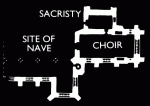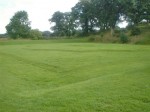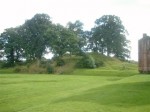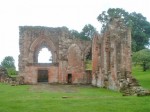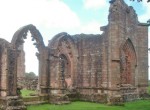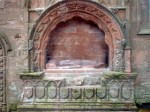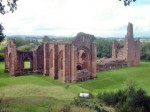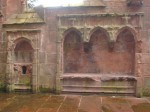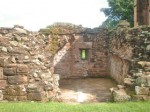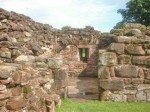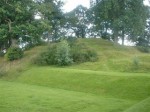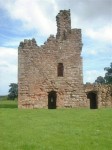Lincluden Collegiate Church
The history of Lincluden Collegiate Church or “Lincluden Abbey” as it is better known today stretches over several centuries. The site was originally used for the motte and bailey castle of Lincluden, so named as it was built beside the Cluden water at Dumfries.
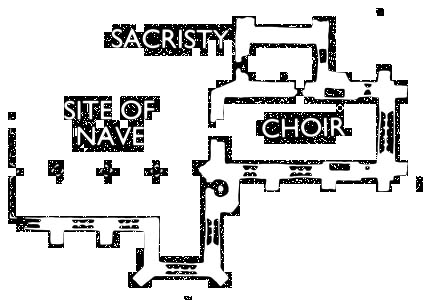
- Ground Plan of Lincluden
In 1160 Uchtred, Son of “Fergus” Lord of Galloway, built a nunnery on the site of the bailey to house a Priory of Benedictine nuns. Over two hundred years later the Priory finally fell into disrepair, and Archibald “The Grim” 3rd Earl of Douglas was granted permission by the Pope in 1389 to close the Priory and replace it with a Collegiate Church. During the 14th century a great deal of building work was carried out. In 1540 a tomb was built in the Choir for Princess Margaret, widow of the 4th Earl of Douglas and daughter of Robert III. Much of the rebuilding work during the early part of the 15th century is believed to have been carried out by John Morow who was also involved in similar work on the Abbeys at Paisley and Melrose. Morow apparently arrived from France where Douglas held lands. During the Reformation the abbey, like other similar Collegiate Churches throughout Scotland, was subjected to vicious attacks from Protestant Reformers. Immediately after the Reformation the much-needed repairs were carried out, with new larger gardens being added as an attractive addition.
However after several years of the Abbey having being passed to various owners, it was finally abandoned in the year 1700. From then on it was used as a quarry until 1882, when it was finally taken over as a national monument, and is now looked after by Historic Scotland.
- Ground Plan of Lincluden
- Gardens from the north east
- Motte and gardens from the north east
- Nave and choir from the west
- Nave from the south-west
- Tomb east wall of the choir
- South-east view from the motte
- 1st vaulted room
- 2nd vaulted room
- Facing motte from the east side of the chapel
- College Tower from the West
Text and pictures provided by Robert Currie.
